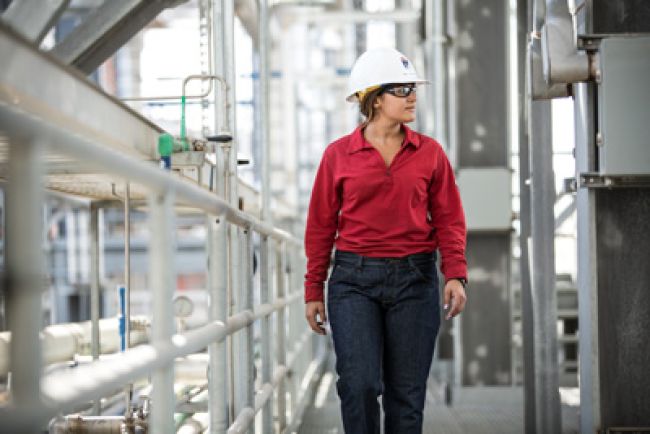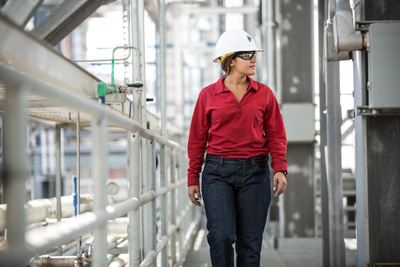
Understanding, Selecting and Caring for FR/AR Clothing

When the original version of the OSHA 29 CFR 1910.269 standard was published in the 1990s, flame-resistant (FR) and arc-rated (AR) clothing weren’t even mentioned. The dangers associated with electric arcs were known at the time, but the standard only required that an employer not allow an employee to wear clothing that, when exposed to flames or electric arcs, could increase the extent of injury sustained by the employee. This eliminated use of garments constructed with synthetic materials – such as polyester, nylon, rayon and acetate – so the default was for employees to wear clothing made of 100% cotton. The problem was that non-FR cotton, once exposed to thermal energies beyond its ignition point, will ignite and continue to burn, thus adding to the employee’s injury.
It has now been a little over five years since FR/AR clothing requirements were incorporated into the 1910.269 standard. The 2014 final rule (see www.govinfo.gov/content/pkg/FR-2014-04-11/pdf/2013-29579.pdf) states the following: “The new provisions for protection from electric arcs include new requirements for the employer to: Assess the workplace to identify employees exposed to hazards from flames or from electric arcs, make reasonable estimates of the incident heat energy to which the employee would be exposed, ensure that the outer layer of clothing worn by employees is flame resistant under certain conditions, and generally ensure that employees exposed to hazards from electric arcs wear protective clothing and other protective equipment with an arc rating greater than or equal to the estimated heat energy.”
Yet even though five years have passed since the publication of the updated final rule, some utilities are still struggling with questions about the FR/AR clothing landscape and how to properly select, use and care for this type of clothing. If the organization you work for is one of those that is struggling, the remainder of this article is designed to help you.
Understanding and Assessing Risk
Most of us have seen the data and videos, but before we go any further, let’s address why organizations build FR/AR clothing programs by reviewing the hazard they are designed to protect against. An arc flash is a powerful and dangerous occurrence during which an electrical current leaves its anticipated path and travels from phase to phase or phase to ground. Because of this short circuit, the surrounding area is filled – in fractions of a second – with an explosive blast, high-pressure thermal waves, ear-shattering acoustical shock waves, toxic metal vapor, and dangerous flying debris and shrapnel. The pressure wave created by an arc flash explosion can damage eyesight and hearing and cause other injuries. However, most serious injuries caused during an arc flash are a result of wearing flammable clothing that ignites and burns the skin. The amount of energy that workers could be exposed to varies greatly, so that’s why it’s critical that workers wear FR/AR clothing with a protection level that matches the level of exposure.
Matching clothing protection levels to the energy that workers could be exposed to begins with a utility performing a workplace hazard assessment, during which the incident energy (IE) at a specific location is calculated in cal/cm2. This IE level determines what arc rating – either the arc thermal performance value (ATPV) or energy breakopen threshold (EBT) – is needed to insulate and protect the worker against the hazard. Today, the arc rating of garments worn by workers must be equal to or greater than the predicted IE.
According to NFPA 70E, an arc rating is the value attributed to materials that describes their performance when exposed to an electrical arc discharge. The arc rating – also calculated in cal/cm2 – is derived from either the determined value of the ATPV or the EBT, should a material system exhibit a breakopen response below the ATPV value. An arc rating is reported as either ATPV or EBT, whichever is the lower value.
The Clothing Supplier Landscape
In today’s FR/AR clothing market, premium suppliers are utilizing fabrics and technologies that have been well-researched, rigorously tested and market proven. These fabrics have been tested on the job and demonstrated to perform as advertised. With multiple manufacturers using an array of fabrics, constructed in a variety of ways and offered through multiple channels, employers can become overwhelmed by their options. So, to help alleviate stress and confusion, following is a simplified overview of the current manufacturing and distribution landscape.
Fabric manufacturers: These companies are responsible for spinning, weaving, knitting and/or finishing FR/AR fabrics and for testing the fabrics to the appropriate ASTM, OSHA, NFPA and independent standards.
Garment manufacturers: These manufacturers cut and sew a wide variety of FR/AR fabrics. Garment manufacturers may sell their products directly to consumers or through distributors.
Garment suppliers: Suppliers may manufacture their own garments, or they may only distribute garments from other FR/AR clothing manufacturers. Some garment suppliers only sell directly, some sell only through distributors, and some do a combination of both.
Industrial laundries: Most industrial laundries have access to multiple brands of FR/AR apparel, and they rent these brands to a variety of industries. Some national laundries manufacture FR/AR garment lines under their own brand names.
Distributors: There are hundreds of distributors that have access to multiple FR/AR clothing brands.
Choosing the Right Supplier
Selecting the right FR/AR clothing supplier for your business is a big decision. Some key questions to ask when looking for a supplier are:
- Do they maintain a viable chain of custody?
- Do they help evaluate fabric performance?
- Do they provide long-term technical support?
- Do they own the manufacturing process or contract it out? If contracted out, what assurances exist that the garment construction is consistent?
- Do they have a track record of proven performance in the conditions required?
- Do they offer garments made from the latest technologies, and can they easily integrate new technologies as they become available?
- Do they adhere to the correct standards of construction for the applicable hazard?
- Do they offer a variety of fabrics, garment styles, outerwear and layering options to streamline your procurement process?
- Do they employ technical staff?
Partnering with a supplier that controls their supply chain, evaluates all fabrics, offers resources to guarantee performance, supplies innovative garment design, and provides readily available technical training and support will make implementing an FR/AR clothing program less daunting than it would be otherwise.
Three Key Decisions
Once your organization has determined its incident energies, the procurement process can be simplified into making decisions about the following three topics.
Protection and Fabric
First and foremost, you must always protect based on the hazard that exposed workers may face. So, step one of the procurement process should be to determine what fabric best meets the level of protection you need.
Garment Style and Comfortability
Find a garment style that is going to be the most comfortable for your employees to wear. It is vital that workers are comfortable in the FR/AR clothing, as discomfort leads to an increased risk of noncompliance and injuries. Clothing should allow for unrestricted movement; however, it should not be too loose or too tight or it could interfere with the task. Because different workers may find some materials more comfortable than others, it is beneficial to let workers try out FR/AR clothing in advance. In addition, PPE for high incident energy may require thicker and heavier clothing, headgear and gloves. Therefore, it is recommended that the worker practice wearing the PPE before working on live equipment.
Value
Decide on a supply channel that best suits your company. It can be an industrial laundry, a safety distributor or another type of supplier. Think of value in terms of not just cost but also durability, availability and choice.
After these decisions have been made, you can then consult with suppliers to match garment options based on your assessments.
Additional Considerations
Beyond the three key decisions described above, there are some additional FR/AR clothing considerations that it’s important to discuss.
Training for Correct Use
For FR/AR clothing to effectively protect a worker, it must be used correctly, which is why all clothing programs must begin with proper training for all affected personnel.
Layering
Wearing multiple layers can be more comfortable than wearing a single layer of thick, heavy clothing, and doing so also can provide workers with additional protection on the job. In fact, layering of FR/AR clothing has become more critical in recent years as utilities have been tasked with matching the incident energies determined by their hazard assessments to the ATPV of the clothing system. Keep in mind that layered garments must be tested together in the order they are to be worn; otherwise, you can only consider the protection level of the outermost layer’s ATPV.
Care and Maintenance
Part of the proper use of FR/AR clothing is ensuring it’s cared for the right way, plus it’s also the law that employers establish and maintain an ongoing policy for the use, care and maintenance of PPE. Make sure such a policy is part of your FR/AR clothing program.
Most industry standards point to manufacturer recommendations for care, while some others provide specific instruction and guidance. Improper care can result in the diminishment of a garment’s FR/AR properties and thus put the worker at risk.
Lastly, whether workers are part of a company-sponsored uniform or laundry program or are caring for their garments at home, it’s up to the employer to ensure that the status of FR/AR clothing used in the field is monitored on a regular basis.
Summary
As you can see, the FR/AR clothing landscape is complex. There are multiple solutions for just about everything, from fabrics and manufacturers to distributors, industrial laundries and more. But a partnership with the right supplier will help to instill you with the confidence that you and your employees are protected against the worst-case scenario.
About the Author: Derek Sang, QSSP, IASHEP, NASP, is the technical training manager for Bulwark Protective Apparel. He has served the FR/AR clothing industry for more than 20 years. Reach him at derek_sang@vfc.com.

